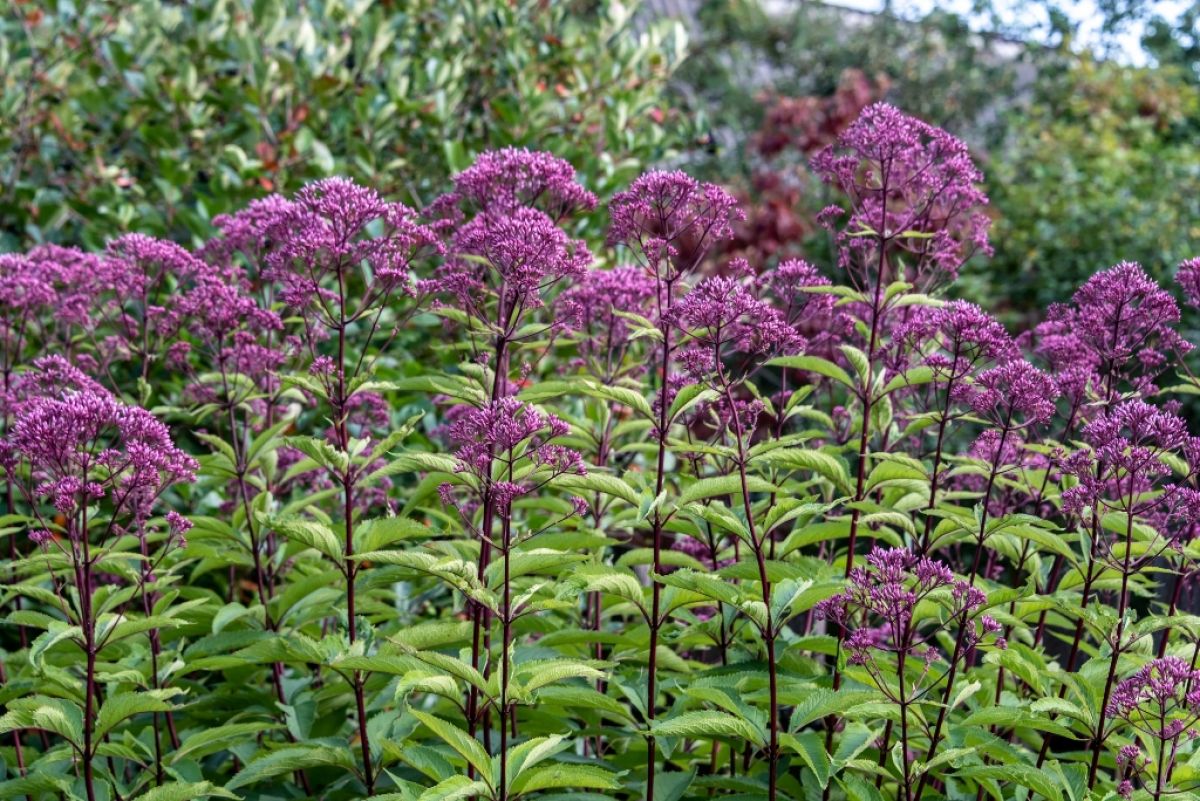Our native Eupatorium purpureum, commonly known as Joe Pye weed, flowers in late summer and fall, producing tall clusters of fluffy purple flowers.
In moist sunny meadows, it can grow as tall as 12 feet but rarely gets that tall in home gardens. I regularly chop my plants back during the summer to keep them at a height that suits me and the other plants that grow nearby. But stop chopping a month or so before it blooms.
The genus Eupatorium is huge with over one thousand species. Most grow in North or South America, and we see them growing in areas from New Hampshire to Florida and west to Nebraska.
A white flowering variety Eupatorium rugosum is native from Quebec to Louisiana where its common names are white snakeroot and boneset, and its roots can be dug and dried and used to treat snakebite.
Both types, the purple and the white, are known as easy-care perennials and are especially valuable in naturalistic gardens. The common name Joe Pye weed was because a 19th-century White medicine man, Joe Pye, used the root to induce sweating during typhus fever.
The botanical name Eupatorium comes from King Eupator during the 1st century, who found that it was an antidote for poison.
This is Moya Andrews, and today we focused on Eupatorium purpureum.










